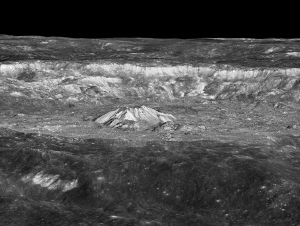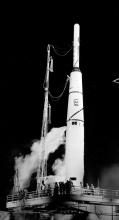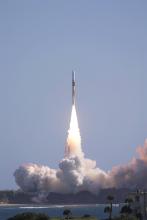What would you do if you found yourself with a few extra Moon rockets? NASA faced that situation in the early 1970s. The Nixon Administration cut its budget, so NASA cancelled the final three planned Apollo missions to the Moon. But the agency had already bought the rockets. It turned one of them into the first American space station, Skylab.
The station used the third stage of the Saturn 5 booster. Engineers stripped out the engines and fuel tanks. They installed living quarters, lab equipment, Earth-watching cameras, and a Sun-watching telescope — the most powerful up to that time. Crews of astronauts would spend up to two months aboard the station.
Skylab was launched 50 years ago tomorrow. It quickly ran into trouble. Engineers worked out solutions, though, saving the station. The other Saturn rockets became exhibits in museums, where they remain today.
The change in plans meant NASA had to abandon three possible sites on the Moon — all with high scientific value. The exact sites hadn’t been locked in. But some possibilities included the large craters Tycho and Copernicus. They formed fairly recently, so they would have provided different kinds of materials from most of the Apollo sites.
Copernicus is about 60 miles across. If you look at the Moon early tomorrow, the crater’s near the middle of the line that separates night from day — a lost opportunity that gave NASA a spare Moon rocket.
More about Skylab tomorrow.
Script by Damond Benningfield







